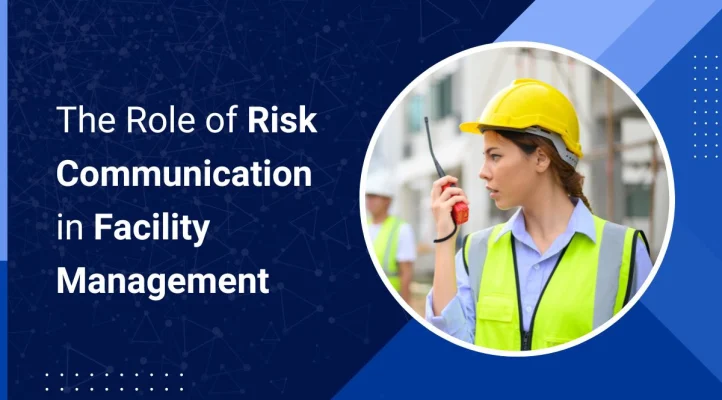The Role of Risk Communication in Facility Management

Effective risk communication is vital in facility management to ensure safety, compliance, and operational continuity. Organizations can mitigate potential risks and improve response times during critical situations by implementing clear emergency protocols and proactive communication strategies.
Understanding Risk Communication in Facility Management
Risk communication involves exchanging information between facility managers, employees, and stakeholders regarding potential hazards, emergency procedures, and safety measures. A well-structured communication plan ensures that everyone within the facility is informed, prepared, and able to respond effectively in an emergency.
The Importance of Clear Emergency Protocols
Emergency protocols serve as the foundation for risk management in facilities. Without well-defined procedures, confusion can arise during critical moments, leading to delays in response and increased vulnerability. Facility managers should develop, document, and regularly update these protocols to address various scenarios, such as fires, natural disasters, and security threats.
Key components of effective emergency protocols include:
- Defined Roles and Responsibilities: Assign specific tasks to individuals to ensure an organized response.
- Accessible Communication Channels: To reach all occupants, utilize multiple communication methods, such as digital alerts and signage.
- Regular Training and Drills: Conduct routine exercises to reinforce emergency procedures and identify areas for improvement.
- Integration with Technology: Leverage automated alerts and monitoring systems to enhance real-time response capabilities.
Best Practices for Risk Communication
To enhance risk communication in facility management, consider the following best practices:
- Establish a Clear Communication Chain. Ensure that information flows efficiently from decision-makers to all facility occupants. This includes defining primary and secondary communication channels to prevent bottlenecks.
- Use Simple and Direct Messaging. During emergencies, clarity is crucial. Use straightforward language and standardized alerts to convey instructions quickly and effectively.
- Leverage Multiple Communication Platforms Relying on a single communication method can be risky. Facilities should integrate email alerts, text notifications, in-person announcements, and digital signage to maximize outreach.
- Engage in proactive risk awareness and regularly update stakeholders on potential risks and safety improvements. Sharing insights on risk mitigation strategies fosters a culture of preparedness.
- Gather Feedback and Continuously Improve After an incident or drill, solicit feedback from employees and occupants to refine protocols and address any gaps in the communication strategy.
Enhancing Emergency Response with Technology
Advancements in digital technology have transformed risk communication in facility management. Real-time monitoring, AI-driven predictive analytics, and automated alert systems enable faster response times and more efficient emergency management. Organizations should invest in innovative facility management solutions to streamline risk communication and improve safety.
How Rhythm Innovations Can Help
Rhythm Innovations’ Command Center provides a centralized platform for managing facility risks and emergency responses. With real-time data visualization, automated alerts, and advanced digital analytics, our Command Center enables facility managers to make informed decisions quickly. The system integrates seamlessly with existing communication channels to ensure that emergency protocols are executed efficiently, minimizing disruptions and enhancing safety.
Conclusion
Risk communication is a critical aspect of facility management that directly impacts safety and emergency preparedness. Facility managers can enhance risk awareness and response capabilities by establishing clear emergency protocols, leveraging multiple communication channels, and utilizing technology. Prioritizing effective communication strategies ensures a safer, more resilient facility environment for all occupants.
Stay ahead of facility risks with Rhythm Innovations’ solutions to optimize emergency communication and safety protocols. Contact us today to learn more about our facility risk management tools.


